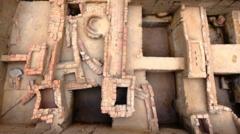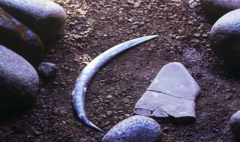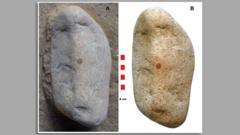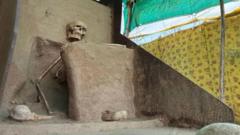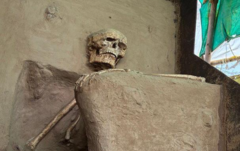Rakhaldas Banerjee, a once-celebrated Indian archaeologist, is gaining newfound attention for his role in uncovering Mohenjo-daro, one of the most significant cities of the Indus Valley Civilisation. His remarkable journey in the early 1900s saw him unearthing this ancient site, which aptly translates to "mound of the dead men" in Sindhi. The city represented a thriving urban centre during the Bronze Age, spanning from Afghanistan to north-west India.
Banerjee, characterized by his adventurous spirit and scholarly aptitude, worked under the British colonial regime as part of the Archaeological Survey of India (ASI). His expeditions across the subcontinent led to the discovery of ancient artefacts, with his efforts at Mohenjo-daro being particularly pivotal. However, despite these groundbreaking findings, Banerjee's legacy remains clouded by controversies during his career at the ASI.
His reports regarding Mohenjo-daro were never officially published, leading to accusations from contemporaries like archaeologist PK Mishra, who claimed ASI chief John Marshall downplayed Banerjee’s contributions, overshadowing him in the narrative of the site's discovery. In her book, historian Nayanjot Lahiri critiques Banerjee's reluctance to adhere to bureaucratic norms, which led to tensions within the ASI and limited acknowledgment of his work.
Born into a privileged family in Bengal in 1885, Banerjee's passion for history was ingrained in him from a young age, subsequently motivating him to pursue archaeology. He joined the ASI in 1910, rapidly ascending the ranks to become a superintending archaeologist. His pivotal exploration of Mohenjo-daro began in 1919, where he excavated remnants of urban life and established vital connections with Harappa in Punjab, uncovering centuries-old artifacts such as coins, seals, and pottery.
Unfortunately, financial and administrative issues plagued Banerjee’s later years at the ASI. His transfer and eventual resignation in 1927 followed a series of disputes over spending and a controversial accusation related to idol theft, despite his exoneration. After leaving the ASI, he succumbed to financial troubles before his untimely death at the age of 45 in 1930.
In retrospect, the story of Rakhaldas Banerjee underscores the potential for significant contributors to remain obscure, highlighting the complexities of historical recognition within archaeological exploration. His work at Mohenjo-daro continues to spark interest and admiration among historians and scholars, serving as a reminder of the intricate tapestry of our shared past.








